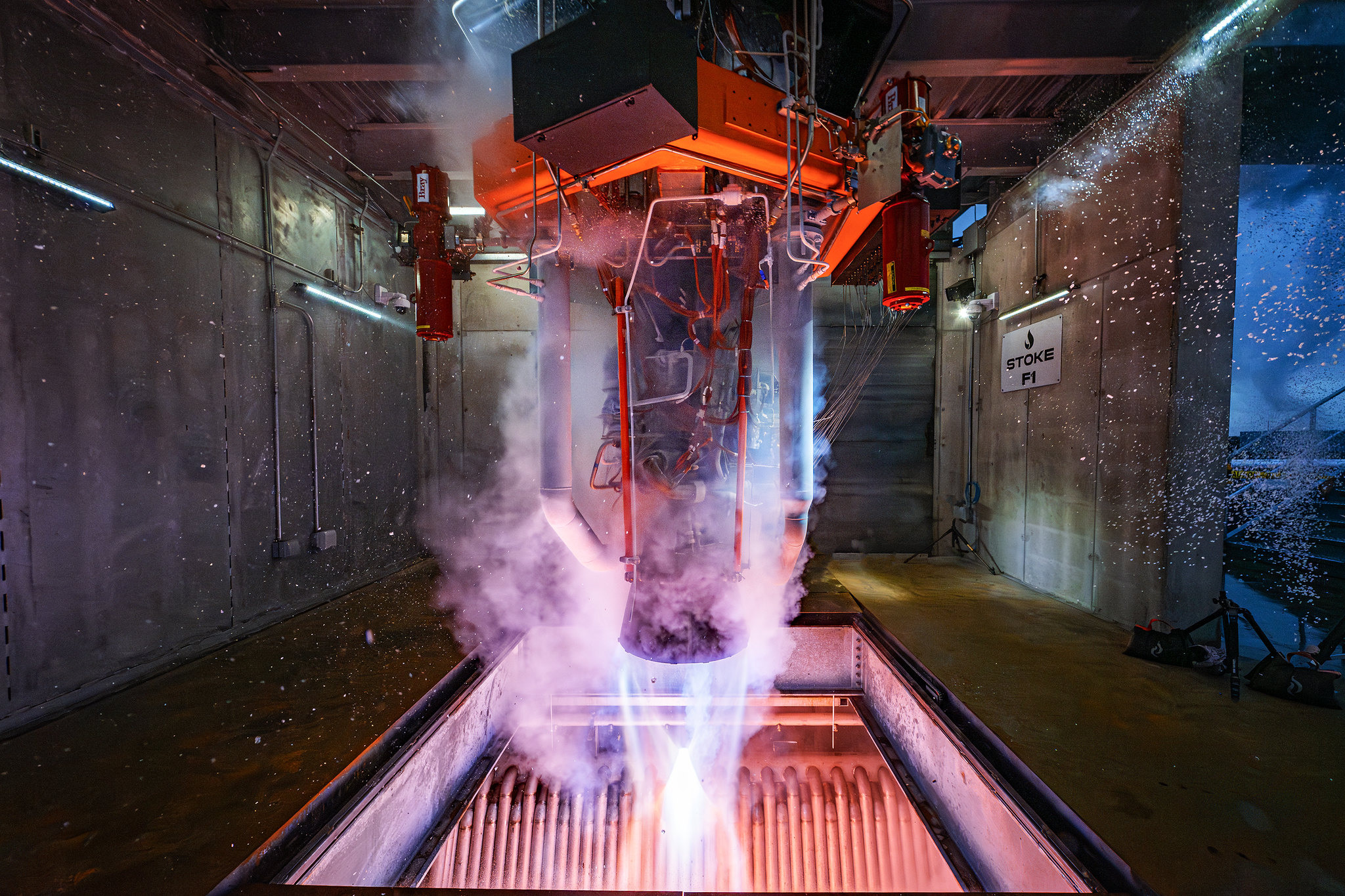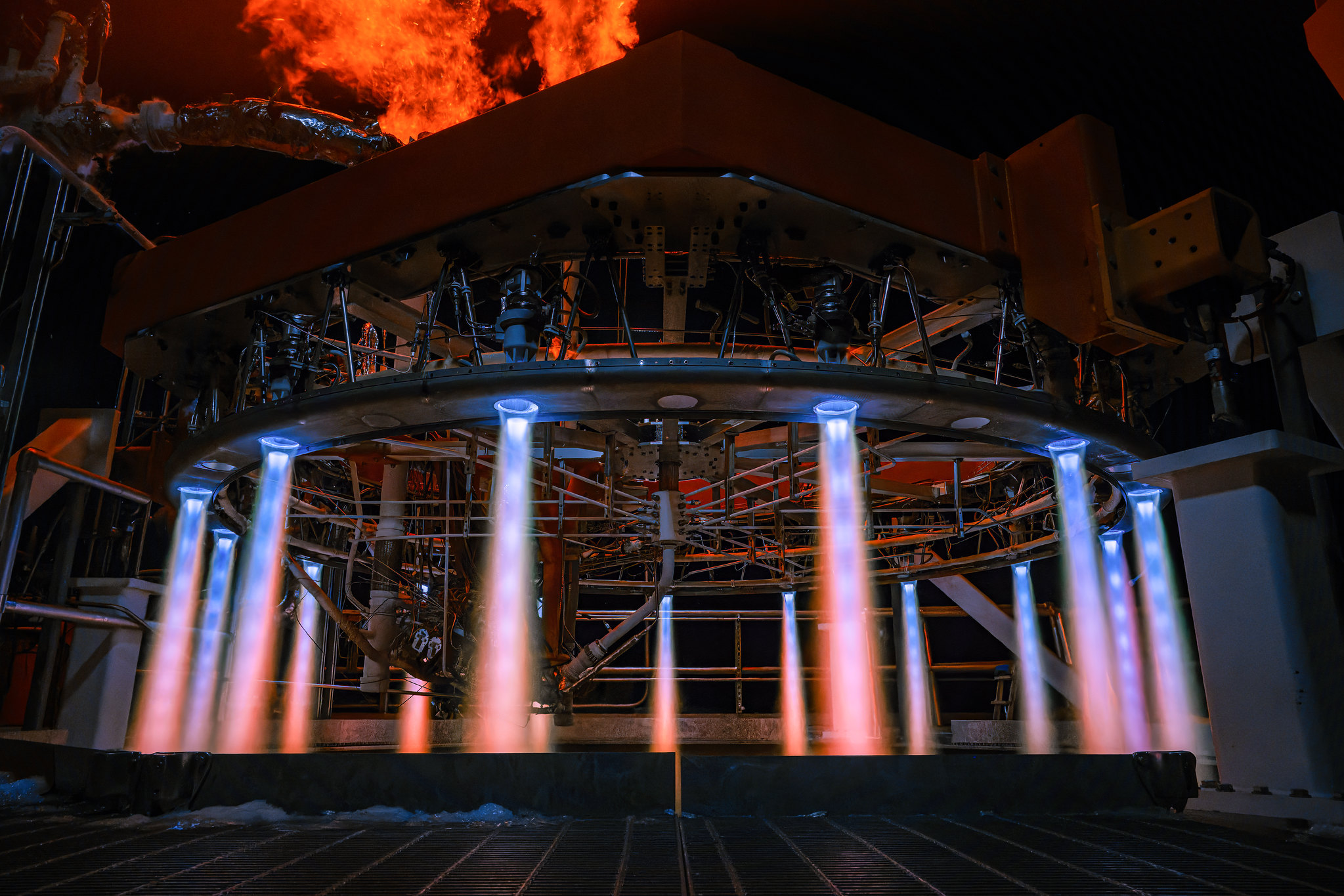
Building Full Reusability:
Why We Continue to Back
Stoke Space
FULL REUSE OR BUST
Railroads were the backbone for the Second Industrial Revolution, transporting critical materials and goods across the continental United States. Fully reusable rockets will be the proverbial railroads of the 21st century, transporting key infrastructure that will launch a new wave of technological revolution.
Communications, navigation, weather forecasting, and intelligence are the current foundation of space operations. This century, we will see increasingly complex use cases covering everything from in-space services, assembly, and manufacturing (ISAM) to lunar and martian bases to in-situ resource utilization (ISRU). However, fully utilizing the abundance of space resources and capabilities is impossible if we continue discarding the first and second stages of launch vehicles after a single use.
SpaceX first achieved reusability in 2017 when they successfully re-flew a Falcon 9 first stage booster – a feat no other company has replicated. While the first stage is now reusable for the Falcon 9, the second stage, representing millions of dollars to manufacture and thousands of labor hours, still burns up in the atmosphere after a single use, lost forever. This inefficiency is one of the greatest bottlenecks for access to space. It keeps costs high, cadence low, and leaves America heavily reliant on a single provider for launch. Meanwhile, China is pouring billions into expanding its launch rate, diversifying its capabilities, and prioritizing space in its military modernization strategy. We are witnessing the start of a great power competition that is no longer confined to only land, sea, or air; it now extends to space — the ultimate high ground.
If the United States cannot continue pushing the boundaries of rapid and affordable access to space, we risk ceding both economic leadership and national security to our adversaries. Untangling this Gordian knot requires a diversified portfolio of fully reusable rockets that are resilient, reliable, and ready on-demand.
ENTER STOKE SPACE
For decades, the aerospace industry treated expendability as inevitable. Rockets were too complex, too expensive, and too fragile to recover fully. The incumbent mentality was that space is hard enough as it is — why increase the difficulty and risk eroding the margins of lucrative launch contracts?
SpaceX proved the incumbents (and all the experts) wrong on first-stage reuse with creativity, persistence, and brilliant engineering. However, the next step still remains — second stage reuse.
Stoke Space was founded with this in mind. Their mission: build the world’s first rapidly and fully reusable orbital-class launch vehicle where both stages return safely, are refurbished quickly, and can fly again within 24 hours.
This isn’t incremental progress — it is a step-function change. Full reusability transforms rocketry from bespoke, hand-built artifacts into an airline-like system in which access to, through, and from space becomes routine.
THE NOVA APPROACH
The technical leap required is immense. Recovering a second stage at orbital velocities is one of the hardest challenges in aerospace. Stoke is solving it with a series of breakthrough innovations:
- A novel engine cycle delivering performance once thought unattainable in the U.S., rivaling the best propulsion systems ever built.
- A hot-structure shield capable of withstanding the brutal environment of reentry while enabling rapid turnaround.
- A design philosophy built on rapid iteration, shortening development cycles and accelerating execution.
The result is Nova, Stoke’s medium-lift orbital launch vehicle. Nova is designed for 100 flights, built from 97% recycled stainless steel, and reduces the environmental impact of launch by 98% compared to today’s rockets. Unlike the small launchers that lack significant payload capacity or heavy-lifters optimized for mega-constellations and large infrastructure, Nova combines rapid reusability with meaningful payload. It unlocks new mission profiles: on-demand logistics, responsive defense, scalable infrastructure deployment, and even orbital asset capture and de-orbit.

TOWARD ORBIT
Stoke has continuously shown a rare ability to convert resources into results with extraordinary efficiency. In 2023, the team validated the hardest part of reusability “Hopper2,” a prototype second stage that launched, hovered, and landed vertically.
That proof of concept was only the beginning. Since then, Stoke’s progress has multiplied:
- National security validation: In March 2025, the U.S. Space Force selected Stoke for the National Security Space Launch (NSSL) Phase 3 Lane 1 program — one of just five companies chosen, and the only one under 20 years old.
- Infrastructure coming online: At Cape Canaveral’s historic Space Launch Complex 14, Stoke is building a fully modernized launch ecosystem — manufacturing, test facilities, and launch pad, all co-located to accelerate iteration and reduce cost.
- Technical progress: Engine testing is underway, the actively cooled heat shield is advancing, and Nova is moving steadily toward orbital launch readiness.
These are not milestones achieved by brute-force spending. They are proof of a team executing with unusual discipline and efficiency, advancing a national capability at a pace and cost unmatched in the industry. Yet, the inflection point lies ahead: Nova’s first orbital launches and the demonstrating full reusability.

BUILDERS AT THE HELM
Great ideas in aerospace are plentiful, but teams who can execute are exceedingly rare.
Co-founders Andy Lapsa and Tom Feldman are builders in the truest sense. Andy, a PhD aerospace engineer and a former propulsion engineer at Blue Origin, had already proven his skill on frontier hydrogen engines before setting out to tackle full reusability. Tom brought the systems expertise and operational discipline to make that vision executable. Together, they set a cultural standard that became Stoke’s greatest strength: the smartest engineers want to work on the hardest problems alongside colleagues they respect.
From modest beginnings in Kent, Washington, they have grown Stoke into one of the most compelling aerospace companies of this generation — not just because of what they are building, but also because of how they are building. Stoke’s ambitious and respectful culture ensures they will continue to attract the talent required to solve aerospace’s hardest problems, long after Nova first reaches orbit.
STOKE X INDUSTRIOUS
At Industrious Ventures, we have backed Stoke from the very beginning and at every opportunity since — investing in their Seed round, leading the Series B, and continuing our support this week in their $510 million Series D. From day one, Andy and Tom showed a rare combination of vision, discipline, and execution.
The case for Stoke is clear: unrivaled founders, a team singular in its category, and a mission that addresses a critical bottleneck to American space power. With Nova, they are not just building another rocket — they are laying the bedrock of America’s space economy. We are privileged to support the builders driving this transformation.
More on this week's news from Geekwire, TechCrunch, Payload, and Stoke Space.
Follow Industrious on LinkedIn and Twitter for future updates.

